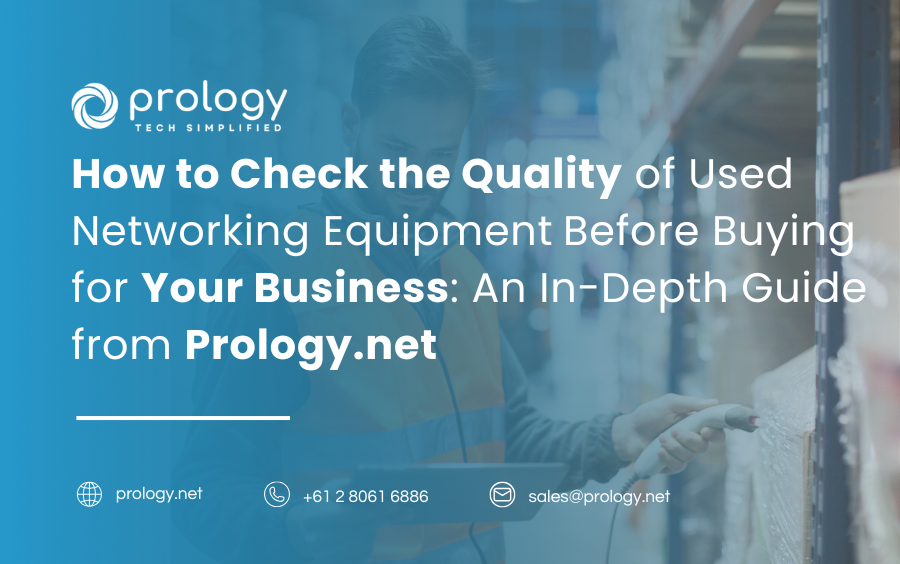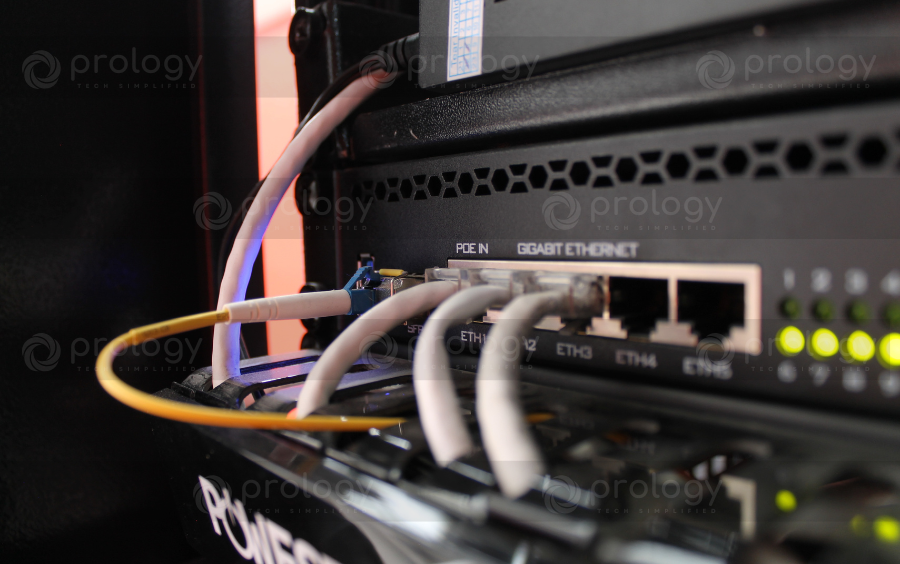How to Check the Quality of Used Networking Equipment Before Buying for Your Business: An In-Depth Guide from Prology.net

In today's economic climate, optimizing costs while ensuring robust network performance is a top priority for every business. Refurbished networking equipment emerges as an economical and effective solution, enabling organizations of all sizes to access advanced technology without the financial burden of purchasing brand-new devices. However, to truly leverage these benefits, thorough inspection and quality assessment of refurbished equipment before purchase are crucially important.
At Prology.net, we pride ourselves on being a trusted partner, specializing in supplying high-quality refurbished networking equipment from leading brands like Cisco, HP, Dell, Ubiquiti, and many more. With our stringent inspection and refurbishment processes, we are committed to delivering products that offer performance and durability comparable to new ones. This article provides an in-depth guide to help you confidently select the most suitable used networking equipment for your business.

1. The Foremost Factor: Choosing a Reputable and Transparent Supplier
This is the initial and most critical step that determines the success of your transaction. A reputable supplier not only guarantees product quality but also commits to clear after-sales services and transparency throughout the entire process.
-
Assess Reputation Through Customer Feedback: Always prioritize suppliers with a long operational history and numerous positive reviews from previous customers. Check independent review platforms such as Trustpilot, eBay, Google Reviews, or LinkedIn. Prology.net is a prime example, with over 20,000 products successfully delivered via eBay and 100% positive feedback. Our professional presence on Prology Pty Ltd's LinkedIn page also signifies a serious and trustworthy business.
-
Clear Warranty and After-Sales Policies: A professional supplier will openly publish clear policies on warranties, returns, and technical support. Thoroughly understand the warranty period, applicable terms, and procedures in case of issues. At Prology.net, we confidently offer a comprehensive warranty policy for all our refurbished equipment, providing complete peace of mind for our customers.
-
Understand the Refurbishment Process: This is the "backbone" of refurbished equipment quality. The supplier should openly detail their inspection, repair, and component replacement processes (if necessary). Prology Pty Ltd, headquartered in Lidcombe, New South Wales (Australia), is renowned for its rigorous inspection and refurbishment procedures, ensuring each device performs like a new product. This transparency helps you understand the true value you are receiving.

2. Inspecting the Physical Condition: Initial Signs of Care
While physical appearance doesn't tell the whole story about performance, it's a significant indicator of how the equipment has been preserved and handled in the past.
-
Examine Scratches and Dents: Minor physical blemishes are acceptable for used items, but be wary of severe dents, especially on corners or near connection ports. These could be signs of the device being dropped or severely impacted, potentially concealing internal damage.
-
Check the Condition of Ports and Slots: All ports (Ethernet, SFP, USB, Console, etc.) must be clean, free from rust, bending, or signs of tampering. Module or expansion card slots must be intact, allowing for easy insertion and removal without sticking.
-
Observe LED Indicators: Status LEDs are the "eyes" of the device. Ensure they function normally when powered on, display the correct colors (green, amber, red) as per the manufacturer's instructions, and do not flicker erratically.
-
Inspect Cooling Fans and Vents: Excessive dust accumulation in fans and vents can lead to overheating, affecting component lifespan. Ensure the fans are clean, unobstructed, and spin smoothly when the device is operating.

3. Evaluating Functional Performance: The "Heart" of the Device
This is the most crucial inspection step, where you will determine the true performance and reliability of the equipment.
-
Boot-up Process: When powered on, the device should boot up smoothly, with no unusual noises (rattling, grinding) from fans or other components. The boot-up time should be within normal limits according to the manufacturer's specifications.
-
Test All Connection Ports: Plug network cables into each Ethernet/SFP port to ensure link lights illuminate steadily and data can be transmitted/received. If possible, test connectivity with other devices on the network.
-
Assess Operational Performance:
-
Throughput and Latency: Use network testing tools to measure data transfer throughput and latency. Ensure they are close to the manufacturer's specifications.
-
Packet Processing Capability: For routers and firewalls, test their routing capabilities, ability to apply security policies, and handle network traffic under load. For switches, test their high-speed switching capabilities, support for VLANs, STP, LAGs, etc.
-
Power Consumption (if possible): An unstable device can sometimes exhibit abnormal power consumption.
-
-
Access and Verify Configuration: Connect to the device via console port, web interface, or SSH.
-
Firmware Version: Check the current firmware/IOS version. Ensure it's a stable version and can be upgraded if needed.
-
Hardware Information: Verify information about the CPU, RAM, flash memory/hard drive to ensure they match the description and function correctly.
-
Factory Reset: Ensure the device has been reset to factory default configuration to avoid old configurations that could cause conflicts or security vulnerabilities.
-
-
Monitor Operating Temperature: The device should maintain a stable temperature during operation. Excessive heat can indicate issues with cooling, faulty fans, or problematic internal components, potentially shortening its lifespan.
4. Inspecting Special Components (If Applicable)
Depending on the type of equipment, some specialized components need thorough inspection.
-
Optical Modules (Transceivers): If the device uses optical modules (SFP, SFP+, QSFP), check if they are correctly recognized by the device, can establish a stable optical link, and transmit data efficiently. Ensure they are compatible with your fiber optic infrastructure.
-
Redundant Power Supply (RPS): For critical enterprise equipment, RPS is an indispensable feature. Test both independent power supplies to ensure they function normally and can seamlessly switch over if one fails, maintaining system continuity.
-
Memory and CPU (for Servers/Firewalls/High-end Routers): Check the detailed RAM capacity, type, and speed of the CPU. Ensure they are powerful enough to meet your business's current and future workload demands.

5. Inquire About Origin and Maintenance History
A trustworthy supplier like Prology.net can often provide information about the equipment's origin (e.g., decommissioned from large-scale upgrade projects, data centers, or major enterprises). Knowing this history, along with the refurbishment process it has undergone, will give you greater confidence in the product's quality and reliability.
Prology.net is proud to be a strategic partner in providing efficient and cost-effective networking equipment solutions for your business. With warehouses in Australia and the USA, we ensure fast delivery and transparent warranty policies. Every refurbished product from us is the result of a rigorous inspection process, delivering reliable quality.
Prology.net Contact Information in the USA:
-
Office Address: 17150 Newhope St # 308, Fountain Valley, CA 92708, United States
-
Phone: (866) 566-3472
-
Email: sales@prology.net
-
Website: prology.net
-
Facebook: facebook.com/Prology.net
Let Prology.net accompany you on your journey to build a robust and efficient network infrastructure! Contact us today for in-depth consultation and to discover optimal solutions for your business.









